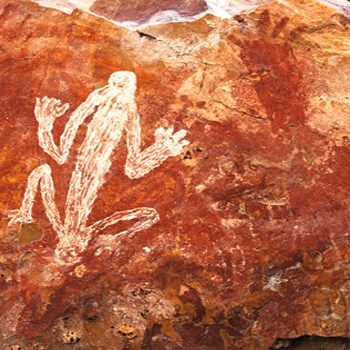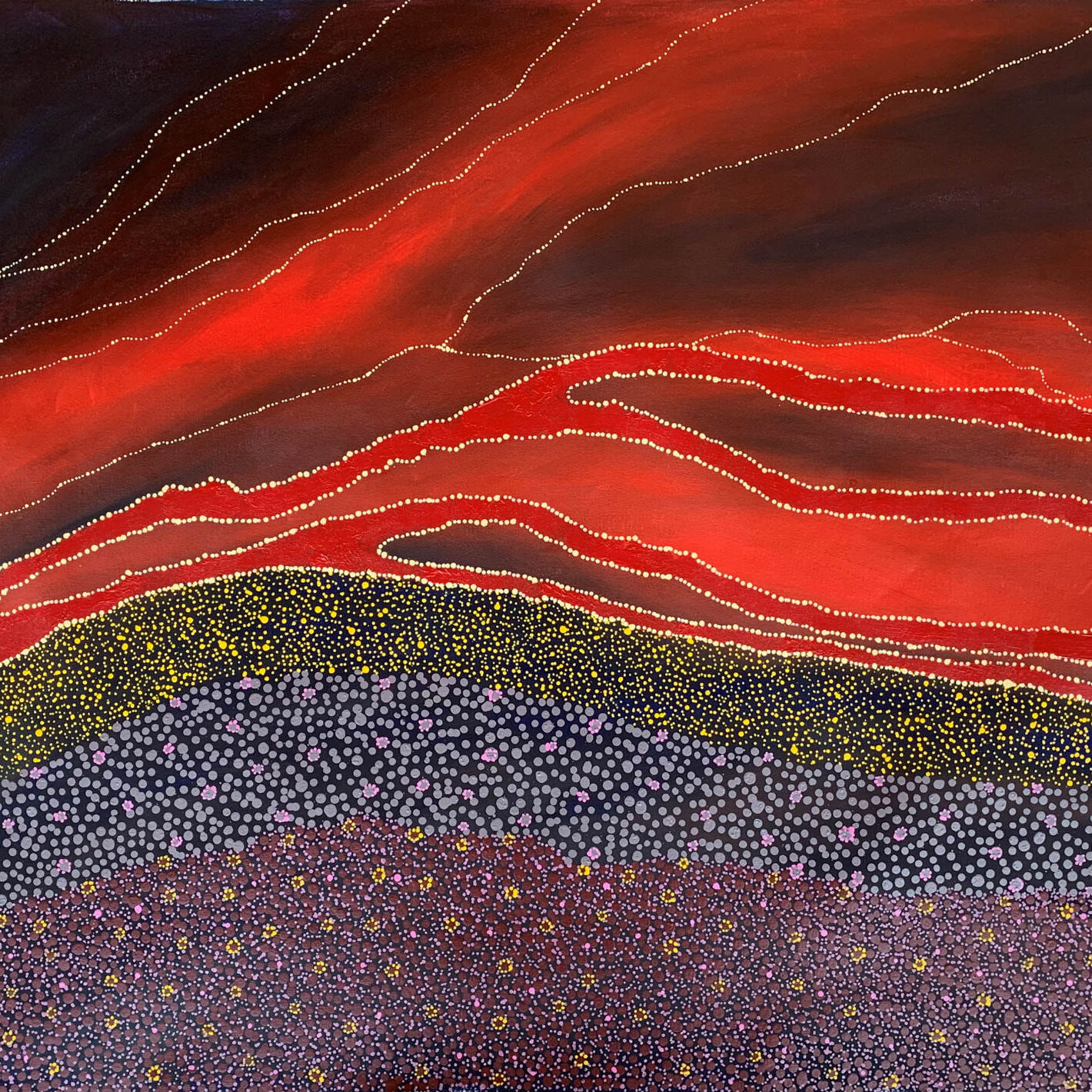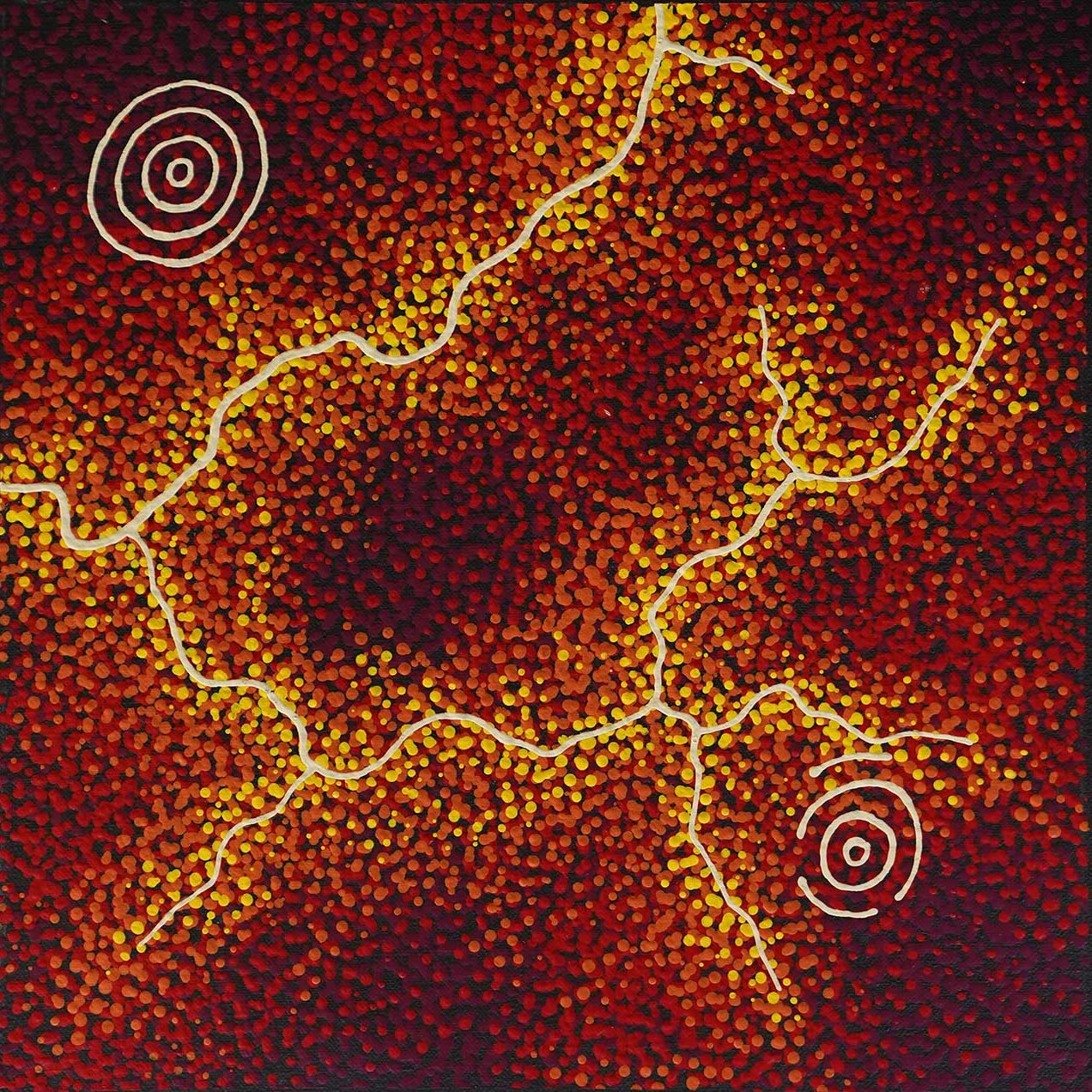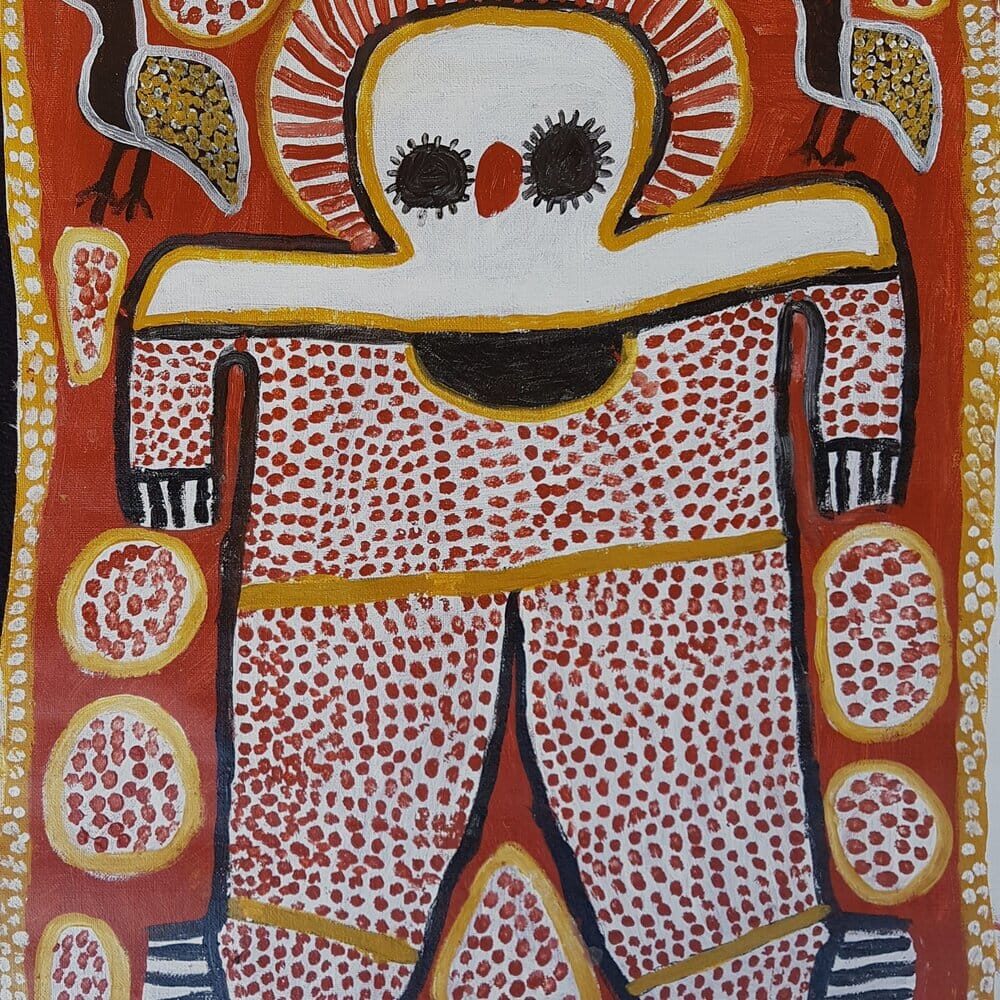Aboriginal Art Facts
Where did Aboriginal art come from?
Australian Aboriginal people had two traditional forms of communication. These were oral storytelling and song as well as visual communication through drawing, painting and the use of ceremonial design. There was no written language, however for many survival depended on the ability to remember where food and water sources could be found at different times of the year. Aboriginal artists often paint maps of country showing important landmarks. They often use a aerial perspective even when they have never been in a plane.
When did Aboriginal art become popular?
Up until the 1970s, the knowledge of traditional culture was mostly kept secret from outsiders. A teacher named Geoffrey Bardon spent 18 months in the remote Aboriginal settlement of Papunya, 240 km west of Alice Springs. He influenced a group of tribal elders to come together to decide what stories could be shared with outsiders in the form of paintings. The elders saw this as a way to communicate the story of their culture and as a way to make money for their communities. Influenced by the success at Papunya, Indigenous communities across Australia also began to create art.
Why is Aboriginal art so popular?
The Contemporary Aboriginal Art movement drew worldwide attention because many Indigenous people possessed an extraordinary talent for composition, colour and visual storytelling. Their work was inspired by deep spiritual beliefs and the art seemed to be a universal language. There is a deep connection to the land and this is reflected in the traditional Creation stories that inspire much of the art. It was visually stunning and emotionally engaging.
When did Aboriginal art become popular?
The Contemporary Art movement has become a powerful bridge between Aboriginal culture and western culture. It is also a bridge between the ancient and the contemporary. It has fuelled a great interest in preserving Indigenous culture. For many remote communities, making art has become a vital source of income and source for pride for the whole community.
How old is ancient Aboriginal art?
Fact: Aboriginal art is part of the oldest continuous living culture in world history, with Australian Aborigines having settled on the Australian continent somewhere between 60,000 and 80,000 years ago. Evidence of Aboriginal culture is found in the rock art, which so far has been dated back at least 20,000 years, while archaeology has dated ancient campsites back to 50,000 to 65,000 years.
Read More: Aboriginal Rock Art of the Kimberley
How old is contemporary Aboriginal art?
Fact: Contemporary Aboriginal art is considered to start at the desert community of Papunya in 1971, when senior desert men began to paint their cultural stories using modern materials. This was prompted by school teacher Geoffrey Bardon requesting that school children paint their own stories, leading the senior men to open up their deeply held cultural knowledge to outside observers. The Papunya Tula desert art movement then influenced other communities to join the art movement through the following decades.
Read More: The Early Influence of Geoffrey Bardon on Aboriginal Art
Does Aboriginal art use symbols?
Fact: Aboriginal art is based on story-telling, using symbols as an alternate method of writing down stories of cultural importance, as well as transmitting knowledge on matters of survival and land management. The tradition of drawing in the sand as a teaching method reflects the powerful use of symbols as a recognised conveyor of meaning, even across vastly different language groups. Story-telling and symbols provided the starting point for contemporary Aboriginal art.
Read More: Aboriginal Art Symbols
Who paints Aboriginal cultural stories?
Fact: Aboriginal artists inherit rights to paint certain cultural stories. Artists need authority and permission to paint traditional stories, and this authority is vested in the custodians of the knowledge of these stories. Ownership of stories is transmitted down generational lines, held within certain skin groups or moieties. Therefore stories are often managed within family groups.
Read More: Aboriginal Art Stories
What is the Dreamtime?
Fact: At the heart of Aboriginal culture and therefore of Aboriginal art, is the Creation law set down in the Dreaming, which provides the identity for traditional Aboriginal people and their connection to the land. Dreamtime is one translation of the Creation time for Aboriginal people, other terms often seen are Jukurrpa and Tingari - the term used varies according to the particular local language. Many Aboriginal artists paint aspects of their Dreaming, which forms part of their inheritance and their identity.
Read More: Aboriginal Art and the Dreamtime
Where is Aboriginal art created?
Fact: Aboriginal art is regional in character and style, so different areas with different traditional languages approach art in special ways. Much of contemporary Aboriginal art can be readily recognised for the community where it was produced. Dot painting is specific to the Central and Western desert, cross-hatching and rarrk design and x-ray paintings come from Arnhem Land, Wandjina spirit beings come from the Kimberely coast. Preference for ochre paints is marked in Arnhem Land and east Kimberley. Other stylistic variations identify more closely to specific communities.
Read More: Aboriginal Art Regions in Australia
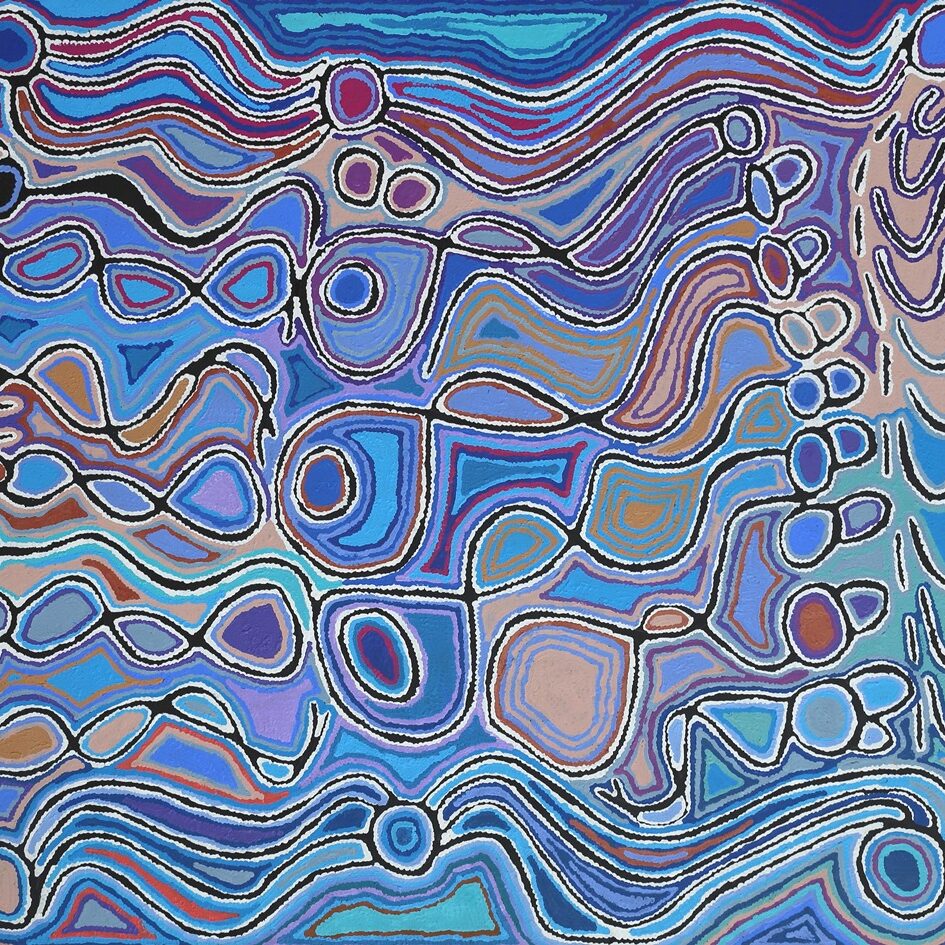
What colours are used in Aboriginal art?
Fact: Colour for Aboriginal art was originally sourced from local materials, using ochre or iron clay pigments to produce red, yellow and white, and black from charcoal. When the modern desert art movement began in 1971 these four colours made up the basis of the artists’ colour range, referring back to traditional role of art in ceremony, body painting, sand painting, story-telling and teaching. Other naturalistic colours were quickly adopted – smoke greys, saltbush mauves, sage greens. During the mid 1980s with the advent of more Aboriginal women artists, a wider range of modern colours were chosen by the artists, and bright desert paintings started to arrive on the market. Choice of colour continues to be an identifier of style for some communities – Papunya Tula opts for soft earth colours, Western Desert Communities opt for strong primary colours.
Read More: Aboriginal Ochre Painting Colour Palettes
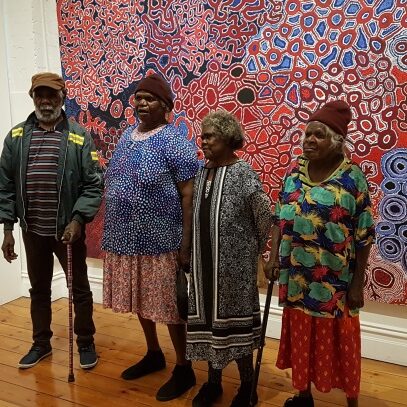
Are Aboriginal paintings maps of the land?
Fact: Aerial views are characteristic of desert Aboriginal art, allowing the artists’ imagination to hover over the country and observe both naturalistic forms of the landscape as well as metaphysical markings – these are the Songlines or Dreaming tracks laid down in the Creation time by the spirit Ancestors. Knowledge of water sources and locations of bush tucker may also be drawn onto these maps. Aerial views are characteristic of a hunter and gatherer society, who read the earth surface closely for signs of life, for tracking animals and recognising recent events.
Read More: Aboriginal Art and Landscapes
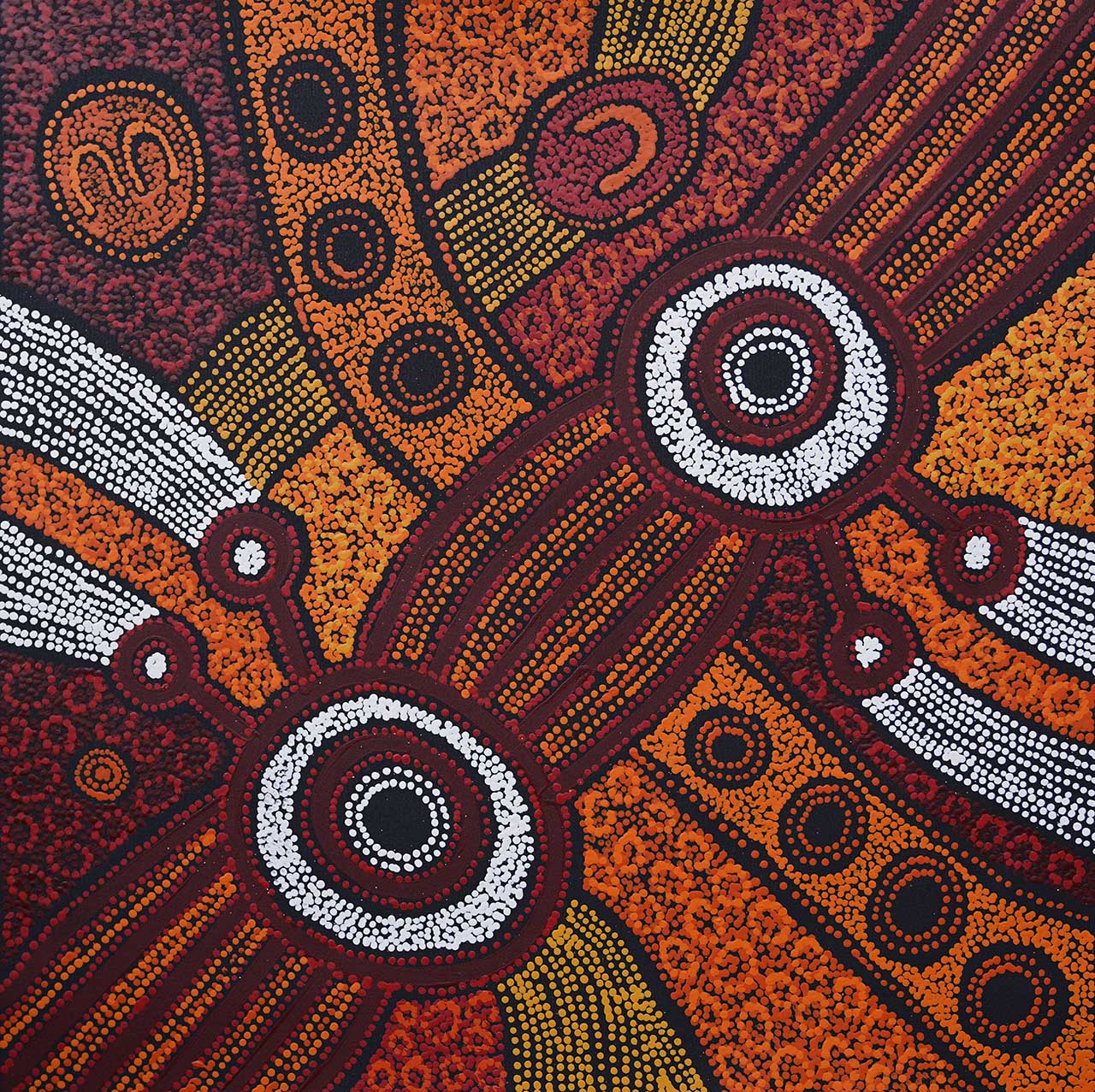
What role does art play in remote communities?
Fact: Contemporary Aboriginal art has been a stimulus for remote Aboriginal communities, in many places being the only business in small communities providing significant income to Aboriginal families. Aboriginal art has recognised the pre-eminent place of elders as the holders of traditional knowledge, and many of the most successful Aboriginal artists have been elders in the age group 60 to 80 years. The art movement has helped to strengthen culture in Aboriginal society by reinforcing the values of traditional knowledge, which forms the basis of Aboriginal art. Art and culture have always been part of the trading history of Aboriginal people, a reciprocal way of bartering knowledge as part of engaging with neighbouring tribes.
A broad range of paintings are being produced in hundreds of remote communities around Australia and by urban Aboriginal artists. Supporting Aboriginal art has an indirect effect in supporting the language and culture of Aboriginal families who chose to live in remote locations linked to their own ancestral lands. These groups are the largest contributors to art works seen in galleries and museums around the country.
Read More: Interviews with Aboriginal Artists

Why is Aboriginal art in both art galleries and museums?
Fact: Aboriginal art has found a way to be represented in both modern contemporary art collections as well as ethnographic collections. This has been a major part of its success in communicating with new audiences. While some elements of naturalistic depiction exist, particularly in Arnhem Land, the stylised representation and use of earth pigments has generally placed this in an ethnographic context. The desert artists’ use of symbolic abstraction has been the key to this work transferring into the modern contemporary art world, through a process that took several decades to mature. Today the notion of the oldest continuous living culture also being part of the most contemporary modern artistic output is a challenge to our ideas of contemporary Aboriginal culture.
Read More: A History of the Emergence of Aboriginal Art

